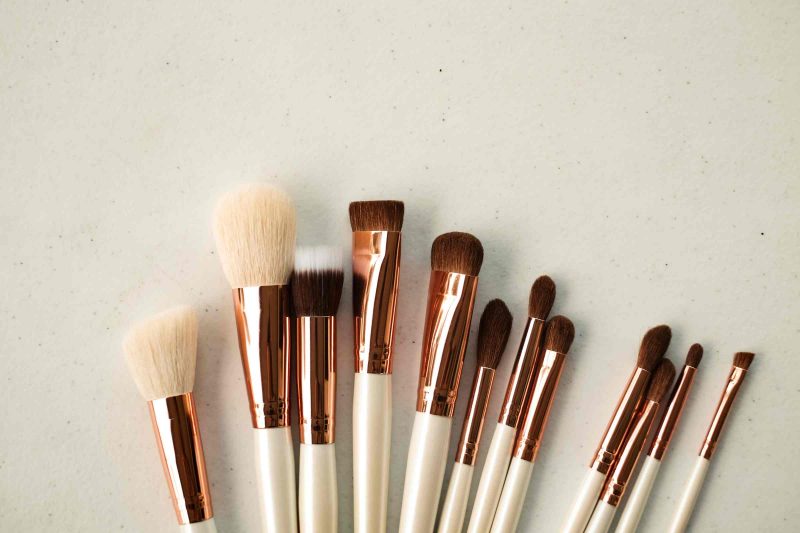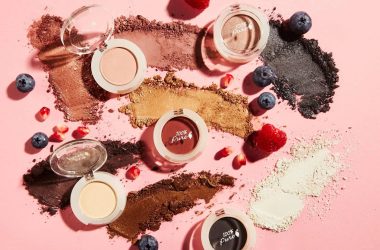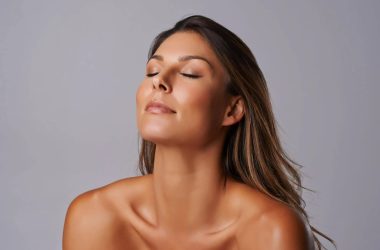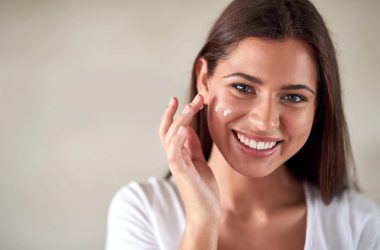A Guide to Identifying Safe and Clean Beauty Products
Posted on April 11, 2025 Written by: 100% PURE®

When it comes to beauty products, the list of ingredients to avoid seems to be growing longer and quicker than your daily laundry list. As the saying goes, better safe than sorry, so skip a line for talc. While the powdery ingredient has been widely used in cosmetics, it’s not without some scrutiny.
So, what is talc, and why is talc bad for makeup? Talc is used widely in cosmetics, such as powder formulas, to improve the textural feel of it and to absorb moisture. However, concerns over its safety – namely respiratory issues if inhaled – and purity have led many consumers to seek talc-free alternatives.
The quest for safe and clean beauty products can be quite a daunting task, but we are here to help guide you along the way. Keep reading for a breakdown of talc, and how to identify talc in makeup so you can make informed beauty choices. Want to cross talc off that list? 100% PURE offers high-quality talc-free makeup made with natural ingredients to support clean beauty.
What Is Talc and Why Is It Used in Makeup?
Talc is a naturally occurring mineral in the earth known as magnesium silicate. It’s frequently added to cosmetic formulas to improve their texture, absorb moisture, and prevent them from caking. So, it’s a seemingly perfect mineral addition to powder formulas – everything from foundation to blush to eyeshadows – is often crafted with talc powder. If it’s powdery, it’s likely made with talc.
With its seeming powder of possibilities, why is talc bad in makeup? Talc can be dangerous due to the potential for asbestos contamination in makeup, as talc and asbestos are naturally occurring minerals that can be found together in the earth during mining. Moreover, talc mined for commercial use can be contaminated with asbestos, a known carcinogen, that can provoke irritation of the lungs when inhaled among other health issues.
Here’s the catch: talc isn’t banned. Currently, talc is FDA-approved, citing that it cannot prove “that most or all talc or talc-containing cosmetic products currently marketed in the United States are likely to be free of asbestos contamination.” However, concerns about contamination with asbestos and potential health risks have led to the rise of talc-free makeup alternatives, like talc free powder, talc free eyeshadow, and talc free makeup.

How to Identify Talc in Makeup
#1. Check the Ingredient List
Cosmetic companies often try to get you to buy a product by using glittering generalities like “natural” or “hypoallergenic “or confusing ingredient jargon. While the ingredient list on makeup may appear intimidating at first glance, understanding its meaning is simply a matter of doing a little research and knowing what to look for or avoid.
Check out the tips below on how to identify talc powder in makeup:
Look for “talc” or “talcum powder” in the ingredient list. Talcum powder is the refined, powdery form made from the mineral talc.
Be aware of “magnesium silicate”, another talc name. Magnesium silicate is the primary component of talc.
Ingredients in products are listed from highest to lowest concentrations or an ingredient hierarchy of order. So, if an ingredient is listed near the beginning of a product, it signifies that it is one of the main components. Therefore, talc will appear near the top if present.
#2. Look for Talc-Free Alternatives
Many brands replace talc with safer, natural alternatives: Talc free makeup uses ingredients like mica, silica, and more described below to achieve similar textures and absorbency as products containing talc, without the potential risks associated with talc powder.
Mica – A naturally occurring mineral that provides a smooth, silky texture and a subtle shimmer.
Silica –A mineral that absorbs oil, smooths the skin and creates a matte finish.
Kaolin clay – A natural, gentle clay that absorbs oil and can help to mattify the skin
Cornstarch & Rice Powder – As a plant-based starch, cornstarch can absorb moisture and create a soft, matte texture. Similar to cornstarch, rice powder absorbs oil and creates a matte finish. Both are natural, plant-based alternatives for a soft finish.
Zinc Oxide & Titanium Dioxide – Provide opacity and added sun protection.
#3. Brand Marketing and Labeling
Look for “Talc-Free” claims on the packaging. To ensure you’re choosing a safe product, look for “talc-free” claims on the packaging, and check the ingredient list for “talc,” “talcum powder,” or “magnesium silicate.
Brands focused on clean beauty often market their talc-free formulations very clearly. They prioritize using safe, non-toxic ingredients and transparent labeling, meaning they are open and honest about their ingredients and don’t contain potentially harmful chemicals like talc powder.
Check brand websites and ingredient policies for transparency. Do some research on the brand behind the product to ensure they uphold ethical values and practice transparency. Look for reputable certifying logos on the packaging, such as EWG Verified.
100% PURE Talc Free Makeup Products
The quest for talc free makeup can take a bit of detective work. We believe you don’t need that extra chore added to your daily laundry list when we have the best talc free powder, talc free eyeshadow, and more made with high-quality, natural ingredients to support clean beauty and healthy, smooth skin!
Fruit Pigmented® Powder Foundation:
This lightweight, talc free powder gives you a soft, flawless complexion without drying out your skin. A base of oil-absorbing rice starch and flattering fruit pigments round out this natural powder foundation and helps set your base for all-day wear while serving soft radiance.
Bamboo Blur Powder
This talc free powder features finely milled bamboo silica to create a silky, oil-absorbing finishing powder perfect for refracting light for a soft, poreless finish.
Fruit Pigmented® Rose Gold Palette:
A talc free eyeshadow, blush, and highlighter palette made with fruit pigments. This ultra-flattering rose gold treasure trove features warm metallics and stunning shimmer from real gemstones versatile enough to serve both edgy and classic makeup looks;
Fruit Pigmented® Blush:
A vibrant, natural blush using fruit-derived colorants instead of synthetic dyes, anti-aging rosehip oil, and nourishing cocoa and avocado butters for a healthy flush of beautiful color.
Cocoa Pigmented Bronzer:
This warm, buildable bronzer is infused with antioxidant-rich cocoa powder and laced with luminescent gems and minerals for a subtle shimmer and a sun-kissed glow.
Fruit Pigmented® Eye Shadow:
A long-lasting, blendable eyeshadow with natural color from fruits, vegetables, and flowers for a gorgeous, long-lasting color payoff.
Why Are Consumers Avoiding Talc in Makeup?
With talc’s supposed impressive ability to improve the textural feel of a product and absorb moisture, is talc bad for you? As we covered, talc powder is harmful because it contains asbestos. The two form together naturally and are almost impossible to separate commercially.
Since there are no strict regulations to absolutely prevent talc contamination, many consumers are avoiding talc in makeup. Let’s delve a little deeper into why is talc bad in makeup.
Concerns about asbestos contamination:
Talc is a naturally occurring mineral that can be contaminated with asbestos, a known carcinogen. Asbestos is found in the same rock types as talc deposits and may be inseparable from talc in the mining process, raising contamination risks. Consumers are choosing talc free makeup, like talc free powder, and talc free eyeshadow to avoid any potential harm from talc in makeup.
Health concerns:
Some studies link talc exposure to respiratory issues and long-term health risks. Talc toxicity studies show that talc particles and fibers are durable and talc particles can remain in the lung for decades after the end of exposure. Exposure to asbestos fibers can lead to health risks like mesothelioma, lung cancer, and asbestosis. There is no safe level of asbestos exposure. The more asbestos you are exposed to, the higher your risk.
Demand for clean beauty:
As more and more consumers are becoming mindful of the skin and makeup products they are putting on their skin, clean ingredients that are derived from natural sources and are free of harmful chemicals and toxins have surged to new levels. Many consumers prefer natural, mineral-based ingredients over talc due to concerns about potential health risks associated with talc powder.

Industry Trends: The Shift to Talc-Free Makeup
As people increasingly prioritize healthier, more ethical options, brands are leading the way in the makeup industry by providing products that align with these values. Driven by consumer concerns surrounding talc’s potential asbestos contamination, brands are increasingly offering talc free makeup, and “talc-free” labeling is becoming more common.
Let’s cover some industry trends and the shift to talc-free alternatives:
Many mainstream beauty brands are now formulating talc-free options due to growing consumer concerns about potential asbestos contamination in talc, and the ingredient’s potential skin irritancy, health issues, and environmental impact. The natural ingredients used to replace talc, such as rice powder and silica, are cleaner, safer, and more effective than talc powder.
Mineral makeup brands, clean beauty retailers, and organic-certified brands typically avoid talc due to asbestos contamination concerns, Brands that prioritize safety and transparency in their formulations, such as those labeled “clean beauty” or “organic,” avoid talc to minimize potential health risks for consumers.
Consumers are increasingly researching ingredients, leading to more transparency in labeling. Consumers are increasingly researching ingredients and demanding transparency in labeling due to growing health and ethical concerns and a desire for cleaner beauty products, prompting brands to respond with more transparency in product ingredients and formulations.
How to Ensure Your Makeup Is Talc-Free
#1. Read ingredient lists carefully
Understanding ingredient lists is key to making smart makeup choices. Finding brands with ingredient transparency is crucial because it lets you find ingredients you love or spot ones that are a major skin red flag, like talc powder. Be sure to read ingredient lists carefully and avoid products containing talc or magnesium silicate.
#2. Research brands committed to clean beauty
To check ingredient policies and product descriptions, look for ingredient lists on product packaging, use online tools like INCI DECODER.
#3. Use third-party resources
The EWG Skin Deep Database rates ingredient safety, using a two-part score: a hazard score (1-10) reflecting known and suspected hazards, and a data availability rating reflecting the amount of scientific data available.
#4. Contact brands directly
If unsure, ask manufacturers for confirmation. Contact the brands directly to get answers to your questions.
#5. Opt for mineral or plant-based alternatives
Look for mica, kaolin clay, silica, and rice powder instead of talc.
Frequently Asked Questions (FAQs)
What is talc, and why is it used in makeup?
Talc is a naturally occurring mineral (magnesium silicate) used in makeup for its ability to absorb moisture and oil, create a silky texture, prevent caking, and make products more translucent.
Why is talc considered harmful in cosmetics?
Talc is considered harmful in cosmetics because it can be contaminated with asbestos, a known carcinogen, which poses a risk of respiratory issues, and even worse cancer.
How can I tell if my makeup is talc-free?
To determine if your makeup is talc-free, always check the ingredient list for “talc,” “talcum powder,” or “magnesium silicate”. If these ingredients are listed, the product likely contains talc, and if you’re seeking talc-free options, you should look for products that explicitly state “talc-free” on the packaging.
What are the best alternative ingredients to talc?
Opt for mineral or plant-based alternatives. Look for mica, kaolin clay, silica, and rice powder instead of talc.
Why is talc powder bad in makeup?
Talc has its dark underbelly. Talc is a material made of magnesium, silicon, and oxygen and may also have asbestos fibers. It’s the asbestos fibers that are the scary part, which can pose health risks, such as respiratory toxicity, as well as cancer. Asbestos and talc can be easily cross-contaminated in nature, explaining why asbestos has been found in commercial cosmetic talcum powder.









